Chen, Hsing-Chung, Nshimiyimana, Aristophane, Damarjati, Cahya, Chang, Pi-Hsien.
2021.
Detection and Prevention of Cross-site Scripting Attack with Combined Approaches. 2021 International Conference on Electronics, Information, and Communication (ICEIC). :1–4.
Cross-site scripting (XSS) attack is a kind of code injection that allows an attacker to inject malicious scripts code into a trusted web application. When a user tries to request the injected web page, he is not aware that the malicious script code might be affecting his computer. Nowadays, attackers are targeting the web applications that holding a sensitive data (e.g., bank transaction, e-mails, healthcare, and e-banking) to steal users' information and gain full access to the data which make the web applications to be more vulnerable. In this research, we applied three approaches to find a solution to this most challenging attacks issues. In the first approach, we implemented Random Forest (RF), Logistic Regression (LR), k-Nearest Neighbors (k-NN), and Support Vector Machine (SVM) algorithms to discover and classify XSS attack. In the second approach, we implemented the Content Security Policy (CSP) approach to detect XSS attacks in real-time. In the last approach, we propose a new approach that combines the Web Application Firewall (WAF), Intrusion Detection System (IDS), and Intrusion Prevention System (IPS) to detect and prevent XSS attack in real-time. Our experiment results demonstrated the high performance of AI algorithms. The CSP approach shows the results for the detection system report in real-time. In the third approach, we got more expected system results that make our third model system a more powerful tool to address this research problem than the other two approaches.
McManus, Maxwell, Guan, Zhangyu, Bentley, Elizabeth Serena, Pudlewski, Scott.
2021.
Experimental Analysis of Cross-Layer Sensing for Protocol-Agnostic Packet Boundary Recognition. IEEE INFOCOM 2021 - IEEE Conference on Computer Communications Workshops (INFOCOM WKSHPS). :1–6.
Radio-frequency (RF) sensing is a key technology for designing intelligent and secure wireless networks with high spectral efficiency and environment-aware adaptation capabilities. However, existing sensing techniques can extract only limited information from RF signals or assume that the RF signals are generated by certain known protocols. As a result, their applications are limited if proprietary protocols or encryption methods are adopted, or in environments subject to errors such as unintended interference. To address this challenge, we study protocol-agnostic cross-layer sensing to extract high-layer protocol information from raw RF samples without any a priori knowledge of the protocols. First, we present a framework for protocol-agnostic sensing for over-the-air (OTA) RF signals, by taking packet boundary recognition (PBR) as an example. The framework consists of three major components: OTA Signal Generator, Agnostic RF Sink, and Ground Truth Generator. Then, we develop a software-defined testbed using USRP SDRs, with eleven benchmark statistical algorithms implemented in the Agnostic RF Sink, including Kullback-Leibler divergence and cross-power spectral density, among others. Finally, we test the effectiveness of these statistical algorithms in PBR on OTA RF samples, considering a wide variety of transmission parameters, including modulation type, transmission distance, and packet length. It is found that none of these benchmark statistical algorithms can achieve consistently high PBR rate, and new algorithms are required particularly in next-generation low-latency wireless systems.
 Biblio
Biblio


